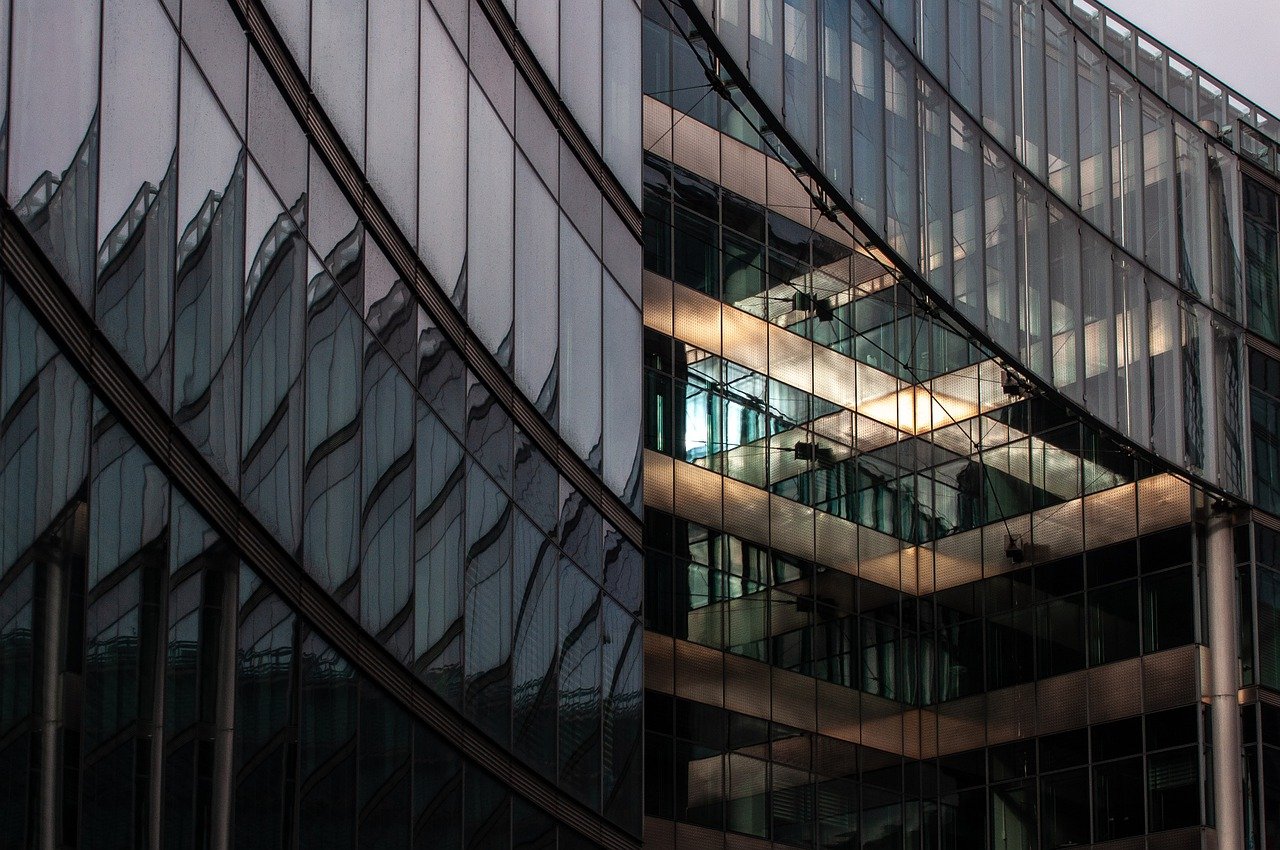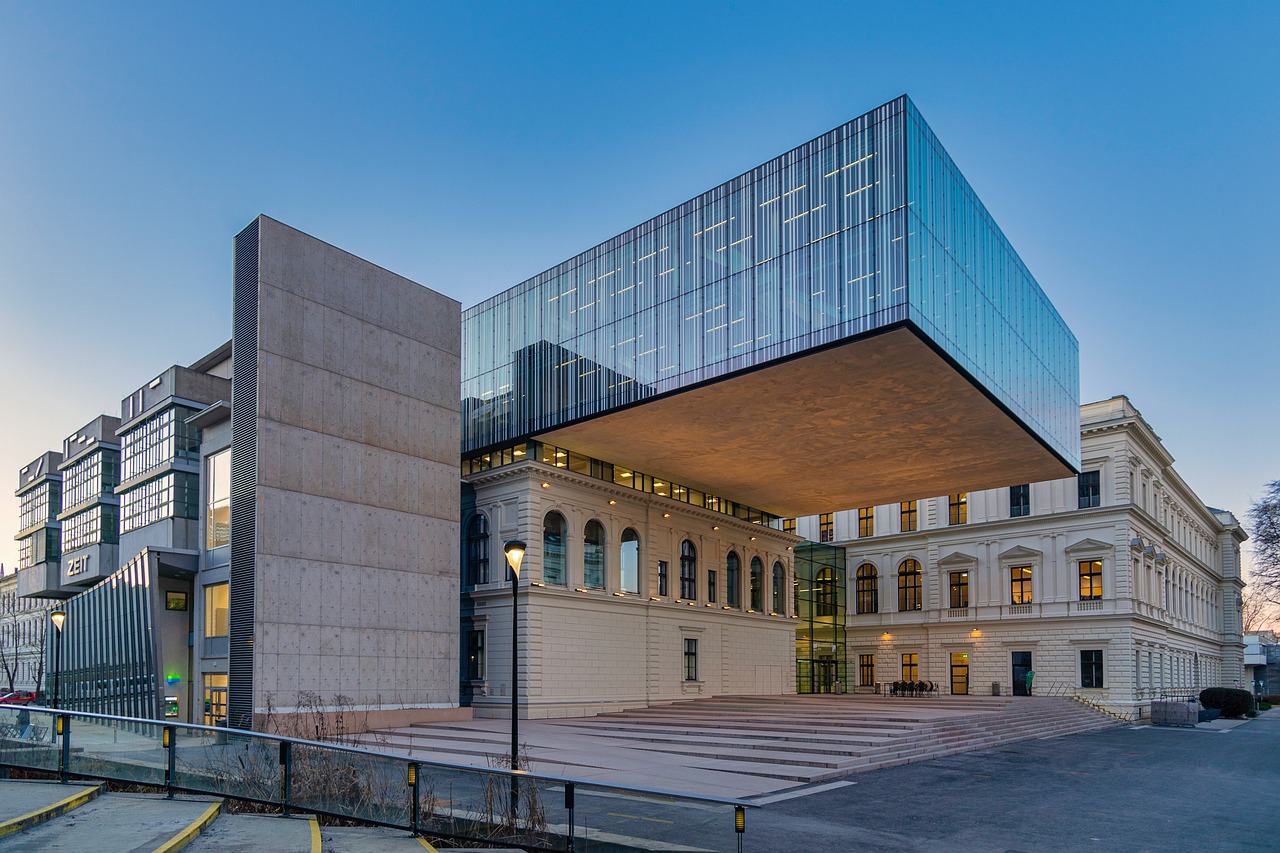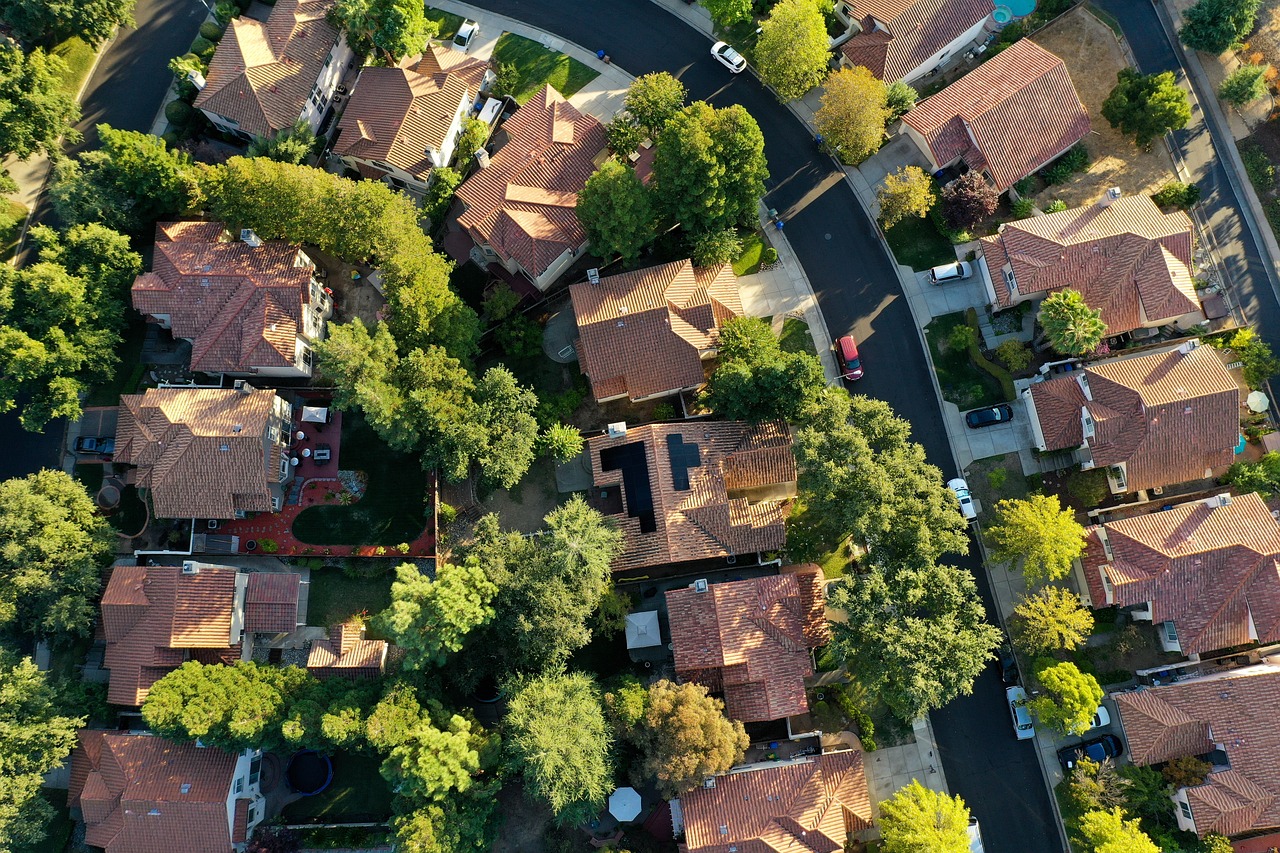Sustainable design in architecture is not just a trend; it’s a vital approach that addresses the pressing environmental challenges we face today. As our planet grapples with climate change, resource depletion, and urbanization, architects are increasingly recognizing the need to create spaces that are not only functional but also environmentally friendly. Imagine a world where buildings harmonize with nature, utilizing resources efficiently while providing comfort and health for their occupants. This vision is becoming a reality through sustainable design principles.
At its core, sustainable design emphasizes the importance of minimizing our ecological footprint. It encourages the use of eco-friendly materials and energy-efficient practices, promoting a balance between human needs and the health of our planet. Think of it as a dance between architecture and nature, where every step taken is deliberate and thoughtful. By embracing sustainable design, architects can contribute to a healthier environment, ensuring that future generations inherit a planet that is vibrant and thriving.
The significance of sustainable design extends beyond environmental benefits; it also plays a crucial role in enhancing social and economic well-being. Sustainable buildings often lead to reduced energy costs and improved indoor air quality, which directly impacts the health of the occupants. Picture walking into a space filled with natural light, fresh air, and a sense of tranquility—this is what sustainable architecture aims to create. Furthermore, these buildings can offer long-term savings, making them not only an ethical choice but a smart financial investment.
As we delve deeper into the principles and benefits of sustainable design, it becomes clear that this approach is not merely a choice but a necessity. Architects and designers are tasked with the responsibility of shaping the built environment in a way that respects and nurtures the planet. By integrating sustainable practices into their work, they can create spaces that are not only beautiful and functional but also resilient and responsible.

This article explores the significance of sustainable design in architecture, highlighting its benefits, principles, and the role it plays in addressing environmental challenges while promoting social and economic well-being.
Sustainable design is more than just a buzzword in the architectural world; it’s a vital approach that aims to create structures that have minimal negative impact on the environment. Think of it as a balancing act between the needs of humanity and the health of our planet. By integrating eco-friendly materials and energy-efficient practices, sustainable design seeks to create a harmonious relationship between our built environment and the natural world.
At its core, sustainable design revolves around a few key principles that guide architects and designers in their quest to build responsibly. These principles are not just theoretical; they play a crucial role in shaping the future of our cities and communities. Here are some of the fundamental aspects of sustainable design:
Implementing these principles not only addresses environmental challenges but also enhances the quality of life for occupants. Imagine living in a home where the air is fresh, the energy costs are low, and you’re doing your part to protect the planet. That’s the dream that sustainable design aims to fulfill.
Moreover, sustainable design is not just about the **materials** or **energy**; it encompasses a holistic view of how a building interacts with its environment. This includes considering the building's orientation, the local climate, and even the community it serves. For instance, a building designed to maximize natural light can reduce the need for artificial lighting, leading to further energy savings. It's like having a friend who always knows how to brighten your day—except in this case, it’s the sun doing the job!
In conclusion, understanding sustainable design is essential for architects, builders, and homeowners alike. It’s about creating spaces that are not only functional and beautiful but also responsible and forward-thinking. By embracing sustainable practices, we can pave the way for a healthier planet and a more sustainable future for generations to come.
Here are some common questions regarding sustainable design in architecture:

Sustainable architecture is not just a trend; it's a vital approach to designing buildings that harmonize with our planet. When we think about the benefits of sustainable architecture, it's like opening a treasure chest of advantages that not only enhance our living spaces but also contribute to the well-being of our environment. Imagine a world where buildings breathe, where energy is saved, and where the air we live in is clean and fresh. That's the promise of sustainable design!
One of the most significant benefits is the reduction in energy costs. By incorporating energy-efficient technologies and materials, buildings consume less energy, which translates to lower utility bills for occupants. Think about it: when you save on energy, you're not just saving money; you're also reducing your carbon footprint. This is particularly crucial in today's world where climate change is a pressing concern. For instance, buildings designed with passive solar heating can utilize sunlight for warmth, drastically cutting down on reliance on heating systems.
Another remarkable benefit is the improvement in indoor air quality. Sustainable architecture often emphasizes the use of non-toxic materials and proper ventilation systems. This means that the air you breathe indoors is cleaner and healthier, which is especially important for families with children or individuals with allergies. Imagine walking into your home after a long day and taking a deep breath, feeling the freshness of the air around you. This is the kind of environment sustainable architecture aims to create.
Moreover, sustainable buildings promote enhanced occupant health. With better air quality and natural lighting, occupants often experience fewer health issues. Studies have shown that people working in green buildings report higher levels of satisfaction and productivity. It's like working in a space that energizes you rather than drains you. The connection between our environment and our well-being cannot be overstated, and sustainable architecture bridges that gap beautifully.
To further illustrate the benefits, let's take a look at some key advantages in a table format:
| Benefit | Description |
|---|---|
| Reduced Energy Costs | Lower utility bills due to energy-efficient design and technologies. |
| Improved Indoor Air Quality | Use of non-toxic materials and better ventilation leads to healthier indoor environments. |
| Enhanced Occupant Health | Better air quality and natural lighting contribute to overall well-being and productivity. |
In addition to these benefits, sustainable architecture also fosters a sense of community and social responsibility. By designing buildings that are not only environmentally friendly but also socially inclusive, architects can create spaces that reflect the values and needs of the local community. This is where the magic happens: when architecture becomes a vehicle for positive change.
Lastly, let's not forget the economic aspect. While the initial investment in sustainable design might be higher, the long-term savings and benefits often outweigh these costs. Over time, the savings on energy bills, maintenance, and health costs can lead to a significant return on investment. It’s like planting a seed today that will grow into a fruitful tree tomorrow!
In conclusion, the benefits of sustainable architecture are profound and far-reaching. From reducing energy costs and improving air quality to enhancing occupant health and fostering community engagement, the advantages are clear. As we continue to face environmental challenges, embracing sustainable design is not just an option; it’s a necessity for a healthier, more sustainable future.

When we talk about in architecture, we're diving into a realm that not only benefits the environment but also enhances our daily lives. Imagine living in a space where the energy bills are significantly lower, and the comfort level is through the roof! That's the magic of energy-efficient design. It’s all about making smart choices that reduce energy consumption while maintaining or even improving the quality of life for occupants. This approach is crucial in a world where energy resources are becoming scarcer and more expensive.
One of the standout strategies in energy-efficient design is passive solar heating. This technique harnesses the sun's energy for heating purposes without the need for mechanical systems. By strategically placing windows and using thermal mass materials, buildings can naturally regulate their temperature. For instance, a well-designed south-facing window can capture sunlight during the winter months, warming the interior spaces without any energy expenditure. It’s like having nature as your personal thermostat!
Another vital aspect of energy efficiency is high-performance insulation. Think of insulation as the cozy blanket for your home. Proper insulation keeps the heat in during winter and the cool air in during summer. This not only makes your home comfortable but also drastically reduces the need for heating and cooling systems to work overtime. Less energy consumption means lower utility bills, which is a win-win situation for both your wallet and the planet.
To put these concepts into perspective, let’s look at a comparison table that showcases the differences between traditional and energy-efficient buildings:
| Feature | Traditional Building | Energy-Efficient Building |
|---|---|---|
| Energy Consumption | High | Low |
| Utility Bills | Expensive | Affordable |
| Environmental Impact | Significant | Minimal |
| Comfort Level | Variable | Consistent |
Moreover, integrating renewable energy sources into architectural designs can take energy efficiency to the next level. Imagine your home powered by solar panels or wind turbines, generating clean energy right from your rooftop! This not only reduces reliance on fossil fuels but also contributes to a sustainable future. By using these technologies, buildings can produce more energy than they consume, creating a surplus that can be fed back into the grid. It’s like turning your home into a mini power plant!
In addition to these strategies, optimizing appliances and lighting is another critical component of energy efficiency. By choosing energy-efficient appliances and LED lighting, homeowners can further reduce their energy consumption. These products are designed to use less electricity while providing the same level of performance as their traditional counterparts. It’s a simple yet effective way to make a substantial impact.
In conclusion, energy efficiency in architecture is not just a trend; it’s a necessity for a sustainable future. By implementing strategies like passive solar heating, high-performance insulation, and renewable energy integration, we can create buildings that are not only environmentally friendly but also economically viable. So, the next time you think about building or renovating, remember that every little choice counts!

Integrating renewable energy sources into architectural designs is not just a trend; it's a vital step toward creating a sustainable future. By harnessing the power of natural resources, architects can significantly reduce a building's carbon footprint while providing clean, renewable energy for its occupants. Imagine a world where your home generates its own electricity, minimizes reliance on fossil fuels, and contributes positively to the environment. Sounds appealing, right? Well, that's the magic of renewable energy integration!
One of the most popular methods of renewable energy integration is the use of solar panels. These panels capture sunlight and convert it into electricity, offering a sustainable energy solution that can power everything from lighting to heating systems. In fact, many modern homes are designed with solar energy in mind, featuring roofs that are optimized for maximum sun exposure. This not only lowers energy bills but also provides homeowners with a sense of independence from traditional energy sources.
Another exciting option is the incorporation of wind turbines into architectural designs. Although more commonly associated with large wind farms, small-scale wind turbines can be effectively integrated into buildings, especially in areas with consistent wind patterns. These turbines can generate significant amounts of energy, particularly for homes and businesses located in rural or coastal regions. The combination of solar panels and wind turbines creates a robust energy system that can cover a substantial portion of a building's energy needs.
Additionally, integrating renewable energy isn't limited to just electricity. Geothermal heating is another fantastic option that taps into the Earth's natural heat. By using ground-source heat pumps, buildings can maintain comfortable temperatures year-round without the need for fossil fuels. This method is not only efficient but also remarkably sustainable, as it utilizes the Earth's constant temperature to regulate indoor climates.
To give you a clearer picture, here’s a brief comparison of the three main types of renewable energy sources commonly integrated into architecture:
| Energy Source | Advantages | Ideal Applications |
|---|---|---|
| Solar Energy | Low energy costs, easy installation, and energy independence | Residential homes, commercial buildings, and outdoor spaces |
| Wind Energy | High energy output in windy areas, low operational costs | Rural areas, coastal regions, and large properties |
| Geothermal Energy | Consistent heating and cooling, low emissions | Residential homes, commercial buildings, and greenhouses |
In conclusion, the integration of renewable energy into architectural designs is a game-changer. It not only contributes to a healthier planet but also promotes energy efficiency and cost savings for occupants. As we face the growing challenges of climate change and environmental degradation, embracing these technologies is essential for architects and builders alike. So, the next time you think about a building project, consider how renewable energy can play a role in shaping a sustainable future.

Water is one of our planet's most precious resources, yet it often goes unnoticed until it's too late. In the realm of sustainable architecture, play a pivotal role in ensuring that our buildings not only reduce their environmental footprint but also promote responsible usage of this vital resource. By implementing innovative strategies, architects can significantly lower water consumption, which is essential in both urban and rural settings.
One of the most effective methods for conserving water is through rainwater harvesting. This technique involves collecting and storing rainwater from roofs and other surfaces for later use. Imagine a building that captures the rain that falls on its roof and uses it to irrigate gardens, flush toilets, or even for washing clothes. Not only does this reduce the demand on municipal water systems, but it also lessens the cost of water bills for occupants. In fact, a well-designed rainwater harvesting system can reduce a building's water consumption by up to 50%!
Another innovative approach is greywater recycling. Greywater refers to the wastewater generated from sinks, showers, and washing machines, which can be treated and reused for non-potable purposes. This method effectively minimizes the amount of fresh water needed for irrigation and toilet flushing. For instance, a typical household can recycle approximately 40% of its wastewater, turning what would be waste into a valuable resource. The environmental impact is significant, as it decreases the overall water demand and reduces the burden on sewage systems.
Moreover, incorporating water-efficient fixtures is a straightforward yet impactful strategy. Low-flow faucets, showerheads, and dual-flush toilets can drastically cut down on water usage without sacrificing performance. These fixtures can reduce water consumption by as much as 30%, making them an essential component of any sustainable design. It’s remarkable how a simple change in fixture design can lead to substantial water savings!
To further enhance water conservation efforts, landscaping choices can also make a difference. Opting for native plants that require minimal irrigation not only supports local ecosystems but also significantly reduces the need for supplemental watering. Using xeriscaping techniques, which emphasize drought-resistant plants and efficient irrigation practices, can transform outdoor spaces into lush landscapes while conserving water. This approach not only beautifies the environment but also promotes biodiversity.
In summary, the integration of water conservation techniques in architectural design is not just beneficial—it's essential. By embracing methods like rainwater harvesting, greywater recycling, and the use of water-efficient fixtures, architects can create buildings that are both sustainable and resource-efficient. As we face increasing challenges related to water scarcity, these practices not only serve the environment but also enhance the quality of life for all occupants. The future of architecture lies in our ability to harmonize our needs with the planet's resources, and water conservation is a significant step in that direction.

When it comes to sustainable architecture, the choice of materials and resources is paramount. This isn't just about aesthetics; it's about making decisions that resonate with our commitment to the environment. Imagine constructing a building that not only serves its purpose but also harmonizes with nature. By selecting sustainable materials, architects can significantly reduce the environmental impact of their projects. This involves sourcing materials that are either recycled, locally sourced, or derived from renewable resources.
For instance, using materials like bamboo, which grows rapidly and absorbs carbon dioxide, can be a game-changer. Similarly, reclaimed wood not only adds character to a building but also minimizes waste. The importance of these choices extends beyond the construction phase; it influences the entire lifecycle of the building. Sustainable materials often lead to less energy consumption during production and transportation, thus reducing the overall carbon footprint.
Moreover, the benefits of using sustainable materials go beyond just environmental impact. They can improve indoor air quality, which is crucial for occupant health. Many conventional materials release volatile organic compounds (VOCs) that can cause respiratory issues and other health problems. In contrast, eco-friendly materials are often non-toxic and promote a healthier living environment.
Here’s a quick comparison of some common materials used in construction:
| Material | Type | Environmental Impact |
|---|---|---|
| Bamboo | Renewable | Low; fast-growing, absorbs CO2 |
| Reclaimed Wood | Recycled | Low; reduces waste and deforestation |
| Concrete (with recycled aggregates) | Recycled | Moderate; reduces landfill waste |
| Steel (recycled) | Recycled | Moderate; energy-intensive but recyclable |
In addition to material selection, the resources utilized during construction play a crucial role in sustainability. Architects should consider the entire supply chain, from the extraction of raw materials to the delivery of finished products. This holistic approach ensures that every step is evaluated for its environmental impact. By prioritizing local suppliers, architects can reduce transportation emissions and support the local economy, thereby creating a sustainable ecosystem around their projects.
Ultimately, the choice of materials and resources is a reflection of an architect's values and commitment to sustainability. By making informed decisions, we can create buildings that not only serve their intended purpose but also contribute positively to the environment and society. So, next time you think about construction, remember that every brick, beam, and board counts towards a more sustainable future.

Sustainable design is not just a trend; it’s a necessity in today's world. The principles of sustainable design serve as a guiding light for architects and builders, ensuring that their creations are not only aesthetically pleasing but also environmentally responsible. At its core, sustainable design aims to create buildings that are efficient, conserve resources, and utilize renewable materials. This holistic approach helps to minimize the negative impacts on the environment while enhancing the quality of life for occupants.
One of the fundamental principles of sustainable design is efficiency. This means designing buildings that use energy, water, and materials more effectively. For instance, architects can incorporate features such as high-performance insulation and energy-efficient windows that significantly reduce heating and cooling needs. By maximizing efficiency, we not only lower operational costs but also decrease the overall environmental footprint of the building.
Another key principle is conservation. This involves minimizing waste and ensuring that resources are used judiciously. For example, during the construction process, careful planning can lead to reduced material waste. Implementing strategies such as modular construction can also lead to less waste by allowing for prefabricated components that fit together seamlessly. Conservation also extends to the operational phase of a building, where practices like recycling and composting can help maintain a sustainable lifestyle for its occupants.
The use of renewable resources is a cornerstone of sustainable design. This principle encourages architects to source materials that are sustainable, such as bamboo, reclaimed wood, or recycled metals. Not only do these materials reduce the demand for new resources, but they also often come with lower carbon footprints. Additionally, integrating renewable energy technologies, such as solar panels and wind turbines, can provide buildings with clean energy, further enhancing their sustainability.
To better understand the impact of these principles, architects often conduct a Life Cycle Assessment (LCA). This process evaluates the environmental impact of a building's materials and design choices throughout its entire lifespan, from extraction and production to use and disposal. An LCA provides valuable insights that can lead to more informed decision-making, ensuring that every aspect of the design aligns with sustainable goals.
Community engagement is also a vital principle of sustainable design. Involving local stakeholders in the design process helps ensure that the buildings meet the specific needs and values of the community. This collaborative approach not only fosters social sustainability but also strengthens community ties. By creating spaces that resonate with the local culture and environment, architects can enhance the overall well-being of the community.
In conclusion, the principles of sustainable design are essential for creating buildings that are not only functional but also beneficial to the environment and society. By focusing on efficiency, conservation, renewable resources, and community engagement, architects can play a pivotal role in promoting sustainability and addressing the pressing environmental challenges we face today.

This article explores the significance of sustainable design in architecture, highlighting its benefits, principles, and the role it plays in addressing environmental challenges while promoting social and economic well-being.
Sustainable design focuses on creating structures that minimize environmental impact. It incorporates eco-friendly materials and energy-efficient practices, aiming to balance human needs with the planet's health for a better future.
Sustainable architecture offers numerous advantages, including reduced energy costs, improved indoor air quality, and enhanced occupant health. These benefits lead to long-term savings and a more sustainable living environment.
Energy-efficient design strategies, such as passive solar heating and high-performance insulation, significantly reduce energy consumption. This not only lowers utility bills but also lessens the carbon footprint of buildings.
Incorporating renewable energy sources like solar panels and wind turbines into architectural designs promotes sustainability. These technologies harness natural resources, providing clean energy and reducing reliance on fossil fuels.
Implementing water-saving technologies such as rainwater harvesting and greywater recycling ensures responsible water use. These practices help preserve this vital resource while also lowering water bills for occupants.
Choosing sustainable materials is crucial in reducing a building's environmental impact. This section discusses the importance of sourcing eco-friendly materials and the benefits of using recycled or locally sourced products.
The principles of sustainable design guide architects in creating environmentally responsible buildings. These principles include efficiency, conservation, and the use of renewable resources to enhance sustainability.
Conducting a life cycle assessment (LCA) is an essential practice for architects aiming to create sustainable structures. This comprehensive evaluation examines the environmental impacts associated with all stages of a building's life—from raw material extraction and processing to construction, use, and eventual demolition or recycling. By understanding how each phase contributes to the overall ecological footprint, architects can make informed decisions that promote sustainability.
One of the major benefits of LCA is its ability to highlight areas where improvements can be made. For instance, if an assessment reveals that a significant amount of energy is consumed during the use phase of a building, architects might consider incorporating more energy-efficient technologies or materials. Similarly, if the disposal phase poses environmental risks, strategies for recycling or repurposing materials can be prioritized.
Here’s a simplified breakdown of the life cycle stages:
| Life Cycle Stage | Description |
|---|---|
| Raw Material Extraction | Impact of sourcing materials on the environment. |
| Manufacturing | Energy and resources used in processing materials. |
| Construction | Environmental impact during the building process. |
| Use | Energy consumption and resource use during occupancy. |
| End of Life | Disposal, recycling, or reuse of building materials. |
By employing LCA, architects can also engage in a more transparent dialogue with clients and stakeholders, showcasing the environmental benefits of their design choices. This not only builds trust but also encourages a collective effort towards sustainability. In essence, a life cycle assessment is not just a tool; it’s a roadmap for architects to navigate the complexities of sustainable design and ensure that their buildings contribute positively to the environment.
Involving the community in the design process ensures that buildings meet local needs and values. This collaborative approach fosters social sustainability and strengthens community ties.
Despite its benefits, implementing sustainable design can be challenging. This section explores common obstacles architects face and strategies to overcome them for successful sustainable projects.
Initial costs for sustainable materials and technologies may be higher, but the long-term savings often justify the investment. Understanding financing options can help mitigate these upfront expenses.
Navigating zoning laws and building codes can pose challenges for sustainable design. Advocating for policy changes and streamlined regulations can facilitate the adoption of eco-friendly practices in architecture.

When it comes to sustainable design, is not just a buzzword; it's a vital ingredient for success. Imagine building a structure that looks stunning and is environmentally friendly, but fails to resonate with the people who will use it. That’s like cooking a gourmet meal without considering the tastes of your diners! Engaging the community in the design process ensures that the final outcome reflects their needs, values, and aspirations. It creates a sense of ownership and pride among residents, which can lead to a more harmonious relationship between the building and its surroundings.
Moreover, involving the community can provide invaluable insights that architects might overlook. For instance, local residents can share their experiences with existing structures, revealing what works and what doesn’t. This feedback loop can significantly enhance the design process, making it more inclusive and effective. It's essential to ask questions like, "What do you love about your neighborhood?" or "What improvements would you like to see?" By fostering open dialogue, architects can better understand the cultural and social dynamics at play.
There are several ways to engage the community effectively:
Ultimately, community engagement fosters social sustainability. When people feel that their voices matter, they are more likely to take care of their environment and support sustainable practices. This collective effort can help create spaces that not only meet ecological goals but also enhance the quality of life for all residents. Just think about it: a building that reflects the community's identity can become a landmark, a point of pride, and a catalyst for further positive change. In this way, sustainable architecture becomes a collaborative art form, blending the aspirations of individuals with the broader goals of environmental stewardship.

Implementing sustainable design in architecture is not without its hurdles. While the benefits are clear and compelling, the path to achieving these eco-friendly structures can be fraught with challenges that architects and builders must navigate. One of the most significant obstacles is the initial cost associated with sustainable materials and technologies. Although these upfront expenses can be higher than traditional building methods, it’s essential to recognize that the long-term savings often outweigh the initial investment. For instance, energy-efficient buildings can lead to substantial reductions in utility bills over time, making them a financially sound choice in the long run.
Another challenge lies in the regulatory landscape. Zoning laws and building codes can be complex and may not always accommodate innovative sustainable practices. Architects often find themselves in a tug-of-war with regulations that were not designed with sustainability in mind. This can lead to delays in project timelines and increased costs. To combat this, advocacy for policy changes is crucial. By working with local governments to streamline regulations, architects can help pave the way for more eco-friendly building practices.
Moreover, there’s the issue of community engagement. Involving the community in the design process is vital, but it can also be challenging. Architects must balance the vision of sustainability with the needs and values of the community. This requires effective communication and collaboration, which can sometimes be easier said than done. However, when done right, community involvement can lead to designs that not only meet environmental goals but also resonate with the people who will use the space.
To illustrate these challenges, consider the following table that outlines some common obstacles faced in implementing sustainable design:
| Challenge | Description | Possible Solutions |
|---|---|---|
| Cost Considerations | Higher initial costs for sustainable materials and technologies. | Explore financing options and incentives for green building. |
| Regulatory Barriers | Complex zoning laws and building codes that hinder innovation. | Advocate for policy changes and streamlined regulations. |
| Community Engagement | Challenges in aligning design with community needs and values. | Facilitate open dialogues and workshops with community members. |
In conclusion, while the journey toward sustainable architecture is filled with challenges, it is also rich with opportunities for innovation and collaboration. By addressing cost considerations, advocating for regulatory changes, and engaging the community, architects can navigate these obstacles and create buildings that are not only environmentally responsible but also beneficial to society as a whole. The road may be rocky, but the destination—a sustainable future—is worth the effort.

When diving into the world of sustainable design, one of the first hurdles that architects and builders often face is the question of cost. It's no secret that the initial investment for sustainable materials and technologies can be higher than traditional options. However, it's crucial to look beyond that first price tag. Think about it like buying a high-quality pair of shoes. Sure, they might cost more upfront, but they last longer and save you money in the long run. The same logic applies to sustainable architecture.
In fact, many studies have shown that while the upfront costs can be daunting, the long-term savings on energy bills and maintenance can far outweigh those initial expenses. For example, buildings designed with energy efficiency in mind can reduce energy costs by as much as 30% to 50%. This is not just a drop in the bucket; it’s significant savings that can be reinvested into other areas of the project or even savings for the occupants.
To further illustrate this point, let’s take a look at a simple comparison table that highlights the potential savings associated with sustainable design:
| Feature | Traditional Building | Sustainable Building |
|---|---|---|
| Initial Cost | $200,000 | $250,000 |
| Annual Energy Costs | $3,000 | $1,500 |
| Maintenance Costs (5 years) | $10,000 | $5,000 |
| Total Cost Over 5 Years | $215,000 | $256,500 |
As you can see from the table, while the initial cost of a sustainable building might be higher, the long-term savings on energy and maintenance can make it a more financially sound investment over time. Moreover, financing options and incentives can help alleviate the burden of those initial costs. Many governments and organizations offer grants, tax credits, and low-interest loans specifically for sustainable projects. It's worth doing some research to see what's available in your area.
Another factor to consider is that sustainable buildings often have a higher market value. As more people become aware of the benefits of green living, properties that are designed with sustainability in mind are becoming increasingly desirable. This can lead to a quicker sale and potentially higher profits if you decide to sell the property down the line.
In summary, while the costs associated with sustainable design can be a barrier to entry, the long-term financial benefits, coupled with available incentives, make it a worthwhile consideration. Embracing sustainable practices not only contributes to a healthier planet but also paves the way for economic advantages that can benefit builders and occupants alike.

This article explores the significance of sustainable design in architecture, highlighting its benefits, principles, and the role it plays in addressing environmental challenges while promoting social and economic well-being.
Sustainable design focuses on creating structures that minimize environmental impact. It incorporates eco-friendly materials and energy-efficient practices, aiming to balance human needs with the planet's health for a better future.
Sustainable architecture offers numerous advantages, including reduced energy costs, improved indoor air quality, and enhanced occupant health. These benefits lead to long-term savings and a more sustainable living environment.
Energy-efficient design strategies, such as passive solar heating and high-performance insulation, significantly reduce energy consumption. This not only lowers utility bills but also lessens the carbon footprint of buildings.
Incorporating renewable energy sources like solar panels and wind turbines into architectural designs promotes sustainability. These technologies harness natural resources, providing clean energy and reducing reliance on fossil fuels.
Implementing water-saving technologies such as rainwater harvesting and greywater recycling ensures responsible water use. These practices help preserve this vital resource while also lowering water bills for occupants.
Choosing sustainable materials is crucial in reducing a building's environmental impact. This section discusses the importance of sourcing eco-friendly materials and the benefits of using recycled or locally sourced products.
The principles of sustainable design guide architects in creating environmentally responsible buildings. These principles include efficiency, conservation, and the use of renewable resources to enhance sustainability.
Conducting a life cycle assessment helps architects understand the environmental impact of materials and design choices throughout a building's lifespan. This approach promotes informed decision-making for sustainable outcomes.
Involving the community in the design process ensures that buildings meet local needs and values. This collaborative approach fosters social sustainability and strengthens community ties.
Despite its benefits, implementing sustainable design can be challenging. This section explores common obstacles architects face and strategies to overcome them for successful sustainable projects.
Initial costs for sustainable materials and technologies may be higher, but the long-term savings often justify the investment. Understanding financing options can help mitigate these upfront expenses.
One of the most significant hurdles in the journey toward sustainable architecture is navigating . These barriers can manifest in various forms, including stringent zoning laws, outdated building codes, and a lack of incentives for sustainable practices. For example, many regions still adhere to regulations that prioritize traditional construction methods, which can stifle innovation and discourage the use of eco-friendly materials.
Furthermore, the complexity of the regulatory landscape can lead to confusion among architects and builders. They may find themselves entangled in a web of local, state, and federal regulations that are not always aligned with sustainable goals. This misalignment can result in delays, increased costs, and ultimately, a reluctance to pursue sustainable design projects.
To address these challenges, it is essential for architects and stakeholders to advocate for policy changes that promote sustainability. This could involve:
Additionally, collaboration among industry professionals can play a crucial role in overcoming these barriers. By sharing best practices and success stories, architects can demonstrate the viability of sustainable design, encouraging others to follow suit.
Sustainable design in architecture refers to the practice of creating buildings and structures that have a minimal negative impact on the environment. This involves using eco-friendly materials, energy-efficient practices, and considering the building's overall lifecycle to promote environmental health.
The benefits of sustainable architecture include reduced energy costs, improved indoor air quality, and enhanced occupant health. By implementing sustainable practices, buildings can lead to long-term savings and create a healthier living environment for everyone.
Energy efficiency is a cornerstone of sustainable design. It involves strategies like passive solar heating and high-performance insulation, which significantly reduce energy consumption. This not only lowers utility bills but also helps decrease the carbon footprint of buildings.
Architects can incorporate renewable energy sources such as solar panels and wind turbines into their designs. These technologies harness natural resources to provide clean energy, reducing reliance on fossil fuels and promoting sustainability.
Water conservation techniques include rainwater harvesting and greywater recycling. These methods ensure responsible water use and help preserve this vital resource while also lowering water bills for the occupants of the building.
Choosing sustainable materials is crucial because it helps reduce a building's environmental impact. By sourcing eco-friendly materials and using recycled or locally sourced products, architects can create structures that are both durable and environmentally responsible.
The principles of sustainable design include efficiency, conservation, and the use of renewable resources. These principles guide architects in creating environmentally responsible buildings that meet both human needs and ecological requirements.
A life cycle assessment is a process that helps architects understand the environmental impact of materials and design choices throughout a building's lifespan. This approach promotes informed decision-making, leading to more sustainable outcomes.
Involving the community in the design process ensures that buildings meet local needs and values. This collaborative approach fosters social sustainability and strengthens community ties, making the project more relevant and accepted by its users.
Architects often encounter challenges such as high initial costs for sustainable materials and technologies, as well as regulatory barriers like zoning laws and building codes. However, understanding financing options and advocating for policy changes can help overcome these obstacles.